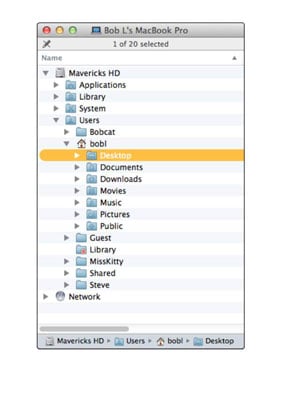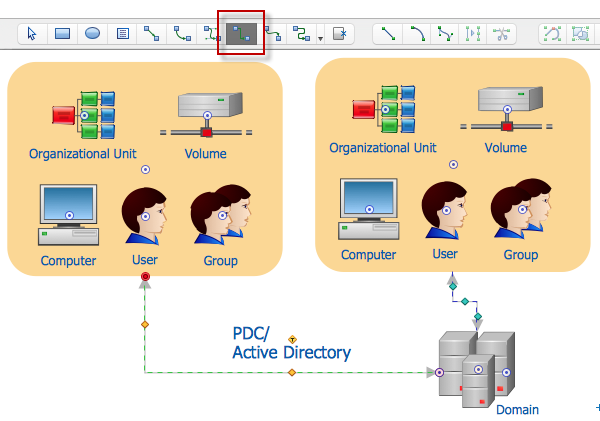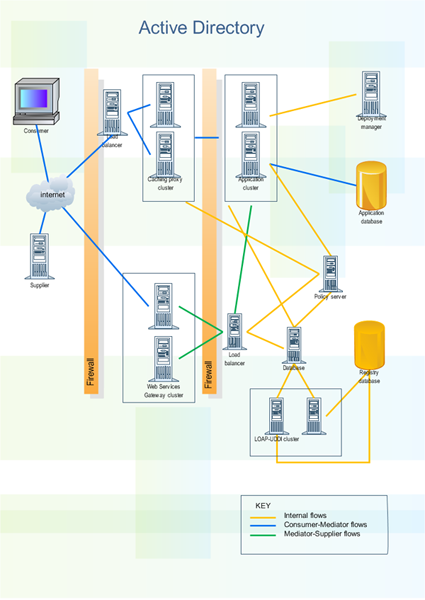
From FreeMind
I made a node module to automate this task: mddir Usage node mddir './relative/path/' Example. Open the terminal or command prompt and cd into the mddir/src folder. Create a diagram for organizing folders using a Creately folder structure template. Create a folder for each category of document and then make subfolders for each aspect of that category. Create an ‘uncategorized’ folder to place the files that don’t fit into any other folder. Color-code the different folders on the diagram so it makes.

On this page: | FreeMind is a premier free mind-mapping software written in Java. The recent development has hopefully turned it into high productivity tool. We are proud that the operation and navigation of FreeMind is faster than that of MindManager because of one-click 'fold / unfold' and 'follow link' operations. So you want to write a completely new metaphysics? Why don't you use FreeMind? You have a tool at hand that remarkably resembles the tray slips of Robert Pirsig, described in his sequel to Zen and the Art of Motorcycle Maintenance called Lila. Do you want to refactor your essays in a similar way you would refactor software? Or do you want to keep personal knowledge base, which is easy to manage? Why don't you try FreeMind? Do you want to prioritize, know where you are, where you've been and where you are heading,as Stephen Covey would advise you? Have you tried FreeMind to keep track of all the things that are needed for that? Did FreeMind make you angry?Write a complaint. DownloadSee Download. Get yourself what more than 4 000 users download each day. stats Project news
New beta FreeMind 1.1.0-Beta2. For the overview of new features, see here: FreeMind 1.1.0: The New Features. See also: Open-Discussion Page with download link (Mac users see below!) (7 Feb 2016). New beta FreeMind 1.1.0-Beta1. For the overview of new features, see here: FreeMind 1.1.0: The New Features. See also: Open-Discussion Page with download link (Mac Mountain Lion users see below!) (22 Jun 2015). New release FreeMind 1.0.1 available for download. It is a bug fix release for 1.0.0. For details see the Open-Discussion Page ('Mac Mountain Lion users see below!) (12 Apr 2014).'http://freemind.sourceforge.net/wiki/index.php?title=Main_Page&action=protect New Release FreeMind 1.0.0 available (19 OCt 2013). The release has a lot of new functions (in comparison with the 0.9.0 release two years ago). Especially clones, collaboration and geographical maps are the major new functions. The most important usability addition is the spell checker (thanks to Eike). For an overview over new features, see FreeMind 1.0.0: The New Features. Information for Mac Maverick (10.9) and Mountain Lion (10.8) Users (20 Aug 2012). After the download, the operating system reports that the application has not been signed and reminds you that the default security preferences prevent you from running such applications. There is an easy workaround, namely control-clicking on the icon and selecting Open. FreeMind has made it as the finalist for the 2009 Community Choice Award in the category 'Most likely to change the way you do everything'!! Thanks for your trust in our project. RunningTo run FreeMind, do one of the following.
Getting a taste of FreeMindYou can view mind maps created with FreeMind now in your web browser, if you have Java 1.4 installed.
Screenshots
Uses of FreeMindCurrent users of FreeMind use it for the following purposes:
FeaturesApart from other things, this release of FreeMind features:
Weak spots include:
LicenseFreeMind is free software and open source software, licensed under GNU GPL V2+ (GNU General Public License), where 'V2+' means 'version 2 of the License, or (at your option) any later version'. Basically, that means that you are free to use FreeMind to whatever purpose you want without paying for that, and that any code derived from current FreeMind's code must also be licensed under GPL V2+. See also Licensing. Get help from other usersAsk a question on FreeMind's Help forum. Also, consider looking at the collection of asked questions, using the search function of your browser. If you're unlike most of computer users, you may also consider reading the documentation, accessible from the menu Help > Documentation; press Ctrl + F to search through the documentation. For Linux users, FreeMind on Linux page may be helpful. Documentation
Documentation available includes the following.
Alternatives to using FreeMind
To achieve that which FreeMind offers, you can use variety of tools.
Authors and contributors
Several people have substantially contributed to the development of FreeMind, including the following.
Many other people have contributed. ToolsFreeMind team uses:
Do you want to reward authors for their work?Drop us a line saying that you like FreeMind. You can do it on our Thank you for the music forum - just start a new thread and click 'Post commment'; it's really easy. We are always glad to read that someone finds FreeMind useful. This definitely increases our motivation. Also, we appreciate to read what attracts you on FreeMind, and what is your most important case of use of FreeMind. Please, address any questions with problems to the Help forum. TestimonialsWhat users say about FreeMind includes the following. Krishna Teja, 24.3.2011:For about 6 years I have only been [i]dreaming[/i] of organizing my life insome manner. There are far too many variables and unknowns, and I never knew[b]how or where to begin organizing[/b]. After 6 years of procrastination anda catastrophic crash in life, I hit mind maps and FreeMind. It looks like thesearch is over, I can now organize my thoughts in one place and get a clearpicture of my own life. The flexibility of the software is only limited by one'simagination. [b]Hats off to the team[/b] for contributing this gem to the opensource world. After only days of using this software I can say its the bestthing since sliced bread. My joy is boundless. I hope to stick to FreeMind throughoutmy life to organize stuff. Krishna Teja,Hyderabad INDIA
Subject: my second brain did not know i have second one... until i've found freemind. no more feelinglike an idiot on morning company meeting after a big hangover - just ten minuteslong look on mindmap and you're back in saddle, ready to go champion! not evenmentioning other pluses it has in ordinary work situations, of course :) whati want is to say big THANK YOU
How could he be doing this? I just asked: mind mapping software was the response. He made a big mind mapof the whole proposal and checked all the nodes one by one. As easy as this. Well, I was fascinated, after passing the tender review (YESSSSSSS!!!) I justbrowsed my PC where freemind was sitting quiet since a couple of years. I justlaunched it and applied it to my current project: a BIG software system deliveryto an important bank. Guys, in 3 days I made a perfect job in tracking activities, preparing projectstatus meeting, todo lists, reports, software test result diagrams... I'm justamazed. >From now on I'll use it for everything. Thanks for this precious piece of software.
Daniel, 1.2.2003: How do I know that FreeMind is a high productivity tool? The answer is I don't. I am using FreeMind on daily basis and am very satisfied with the benefits it brings me. What I really consider important is that when I use FreeMind, most of the time I don't have toask myself 'how do I do this thing in FreeMind', but I rather just do what I need without thinking about it. FreeMind makes my task of collecting, organizing and analyzing information on a given topic much easier. James, 14.10.2002: Now, having tried out the new release, I can tell you: It's brilliant! Well done! Henning, 21.11.2002: I recently started using FreeMind and I'm rather delightet. After getting to known it, it immediately became one of my every-day-use-tools. Joe, 20.1.2003: I downloaded Freemind several months ago and it has become a vital part of my daily activites. I am enormously grateful for the program. Paul, 9.2.2003: What a splendid piece of work! Tom, 13.2.2003: I appreciate version 6.1 very much. Having the DnD capability into and out of my emails has now made Freemind the source document for my management work. 6.1 is stable, simple and elegant in text, lines, and manipulation. I prefer such elegance to commercial versionsbecause I have work to do, not time to make things look better. This is a superb complexity organizer. I also use it at home to capture my martial arts learning as I head towards ablack belt. I put in the basic movements and the katas or arranged groups ofmovements. I use that when I practice at home. Perry, 10.4.2003: I have been using FreeMind for two or three months now, and find it totally indispensable! I simply can't say enough good things about how it has helped me get on top of an overwhelming workload. I've tried task managers and project managers ad-nauseam, and they areeither too simplistic or too cumbersome. See more of positive reactions on Thank you for the music forum. ReviewsSo you want to know what electronic press has to say about FreeMind? FreeMind has been reviewed in the following articles and blogs.
See more at marketing page. More pagesThis website also features the following pages. Forums ~Requests for enhancements ~Import and export ~Flash browser ~FreeMindPDA ~Freemind Win Collab ~Sandbox ~ Documentation efforts ~Plugins ~Short patches ~Tutorial effort ~User.properties |
The Library directories are where the system and your code store all of their related data and resources. In macOS, this directory can contain many different subdirectories, most of which are created automatically by the system. In iOS, the app installer creates only a few subdirectories in ~/Library (such as Caches and Preferences) and your app is responsible for creating all others.
Mac Folder Structure Diagram Template
Table A-1 lists some of the common subdirectories you might find in a Library directory in macOS along with the types of files that belong there. You should always use these directories for their intended purposes. For information about the directories your app should be using the most, see The Library Directory Stores App-Specific Files.
Subdirectory | Directory contents |
|---|---|
| Contains all app-specific data and support files. These are the files that your app creates and manages on behalf of the user and can include files that contain user data. By convention, all of these items should be put in a subdirectory whose name matches the bundle identifier of the app. For example, if your app is named MyApp and has the bundle identifier Resources required by the app to run must be placed inside the app bundle itself. |
| Contains programs that assist users in configuration or other tasks. |
| Contains audio plug-ins, loops, and device drivers. |
| Contains app-specific autosave data. |
| Contains cached data that can be regenerated as needed. Apps should never rely on the existence of cache files. Cache files should be placed in a directory whose name matches the bundle identifier of the app. By convention, apps should store cache files in a subdirectory whose name matches the bundle identifier of the app. For example, if your app is named MyApp and has the bundle identifier |
| Contains resources for picking colors according to a certain model, such as the HLS (Hue Angle, Saturation, Lightness) picker or RGB picker. |
| Contains ColorSync profiles and scripts. |
| Contains system bundles and extensions. |
| Contains the home directories for any sandboxed apps. (Available in the user domain only.) |
| Contains plug-ins for extending system-level contextual menus. |
| Contains data files with web browser cookies. |
| Contains data used by Xcode and other developer tools. |
| Contains language dictionaries for the spell checker. |
| Contains documentation files and Apple Help packages intended for the users and administrators of the computer. (Apple Help packages are located in the |
| Contains device drivers and other kernel extensions. |
| Contains aliases to frequently accessed folders, files, or websites. (Available in the user domain only.) |
| Contains font files for both display and printing. |
| Contains frameworks and shared libraries. The |
| Contains plug-ins, libraries, and filters for web-browser content. |
| Contains keyboard definitions. |
| Specifies the agent apps to launch and run for the current user. |
| Specifies the daemons to launch and run as root on the system. |
| Contains log files for the console and specific system services. Users can also view these logs using the Console app. |
| Contains the user’s mailboxes. (Available in the user domain only.) |
| Contains plug-ins for the System Preferences app. Developers should install their custom preference panes in the local domain. |
| Contains the user’s preferences. You should never create files in this directory yourself. To get or set preference values, you should always use the |
| In the system and local domains, this directory contains print drivers, PPD plug-ins, and libraries needed to configure printers. In the user domain, this directory contains the user’s available printer configurations. |
| Contains QuickLook plug-ins. If your app defines a QuickLook plug-in for viewing custom document types, install it in this directory (user or local domains only). |
| Contains QuickTime components and extensions. |
| Contains screen saver definitions. See Screen Saver Framework Reference for a description of the interfaces used to create screen saver plug-ins. |
| Contains scripts and scripting resources that extend the capabilities of AppleScript. |
| Contains system alert sounds. |
| (Deprecated) Contains system and third-party scripts and programs to be run at boot time. (See Daemons and Services Programming Guide for more information about starting up processes at boot time.) |
| Contains web server content. This directory contains the CGI scripts and webpages to be served. (Available in the local domain only.) |


Mac Folder Structure Diagram Pdf
Copyright © 2018 Apple Inc. All Rights Reserved. Terms of Use | Privacy Policy | Updated: 2018-04-09